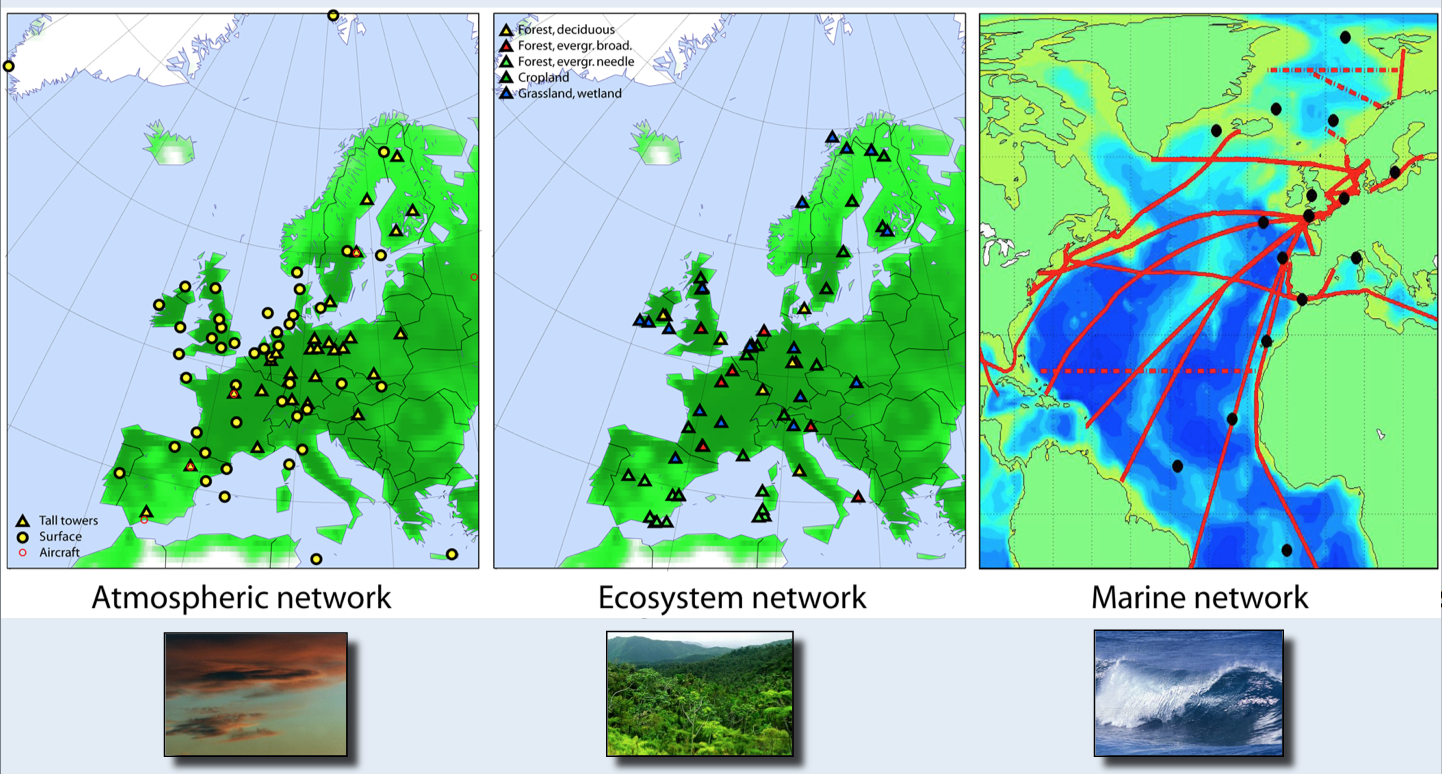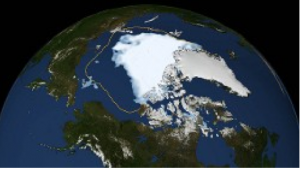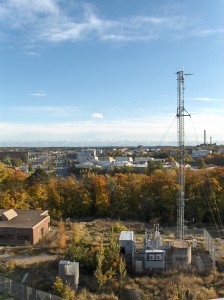 The perturbed global biogeochemical cycles of the greenhouse gases are a major driving force of current and future climate change. The IPCC has concluded that a large part of the observed rise of global temperature is very likely due to increasing greenhouse gases in the atmosphere, driven by man-made emissions overtaking the natural cycles of carbon dioxide (CO2), methane (CH4) and nitrous oxide (N2O). Deeper understanding of the driving forces of climate change requires full quantification of the greenhouse gas emissions and sinks and their evolution. The mission of ICOS RI is to enable research to understand the greenhouse gas budgets and perturbations. ICOS RI will
The perturbed global biogeochemical cycles of the greenhouse gases are a major driving force of current and future climate change. The IPCC has concluded that a large part of the observed rise of global temperature is very likely due to increasing greenhouse gases in the atmosphere, driven by man-made emissions overtaking the natural cycles of carbon dioxide (CO2), methane (CH4) and nitrous oxide (N2O). Deeper understanding of the driving forces of climate change requires full quantification of the greenhouse gas emissions and sinks and their evolution. The mission of ICOS RI is to enable research to understand the greenhouse gas budgets and perturbations. ICOS RI will
- track carbon fluxes in Europe and adjacent regions by monitoring the ecosystems, the atmosphere and the oceans through integrated networks,
- provide the long-term observations required to understand the present state and predict future behavior of the global carbon cycle and greenhouse gas emissions,
- monitor and assess the effectiveness of carbon sequestration and/or greenhouse gases emission reduction activities on global atmospheric composition levels, including attribution of sources and sinks by region and sector.
Leading the negotiations to establish the European ICOS organization has been one of the major efforts of the division, together with the FMI, for the last couple of years. At the same time the Finnish national station network to monitor the greenhouse gas has been upgraded and built to match the ICOS standards. ICOS is currently in the transitional phase between the preparatory phase project and ICOS ERIC (European Research Infrastructure Consortium). The leader of the transitional phase is prof Timo Vesala. ICOS Director General recruitment process is going on and the new DG should start in the Head Office by the end of this year.
The structure of ICOS RI consists of the following parts:
- Organized ICOS National Networks (such as ICOS-Finland, http://www.icos-infrastructure.fi)
- ICOS Central Facilities (including Atmospheric Thematic Centre, Ecosystem Thematic Centre, Ocean Thematic Centre, Central Analytical Laboratory),
- Its European legal entity, ICOS ERIC, including the Head Office and Carbon Portal. ICOS ERIC is the European legal entity to manage the activities of ICOS RI. ICOS ERIC is responsible for coordination, management, scientific, strategic and technical planning, and outreach of ICOS RI.
The Head Office of the ICOS ERIC legal entity and coordination of the ICOS RI is in Helsinki, Finland.
ICOS ERIC application has been submitted by the Finland’s permanent representation to the EU to the European Commission for step 1 evaluation in 21.6.2013. The EC will assess the application to ensure its compliance with the requirements of the ERIC Regulation. Four to five independent experts will assist the Commission in its assessment of the application’s compliance regarding the necessity, added value, access, mobility, knowledge transfer and dissemination of the RI. The next step will commence in autumn and include the signature process between the member and observer countries. ICOS ERIC is planned to be established early 2014.
 More information at: http://icos-infrastructure-transition.eu
More information at: http://icos-infrastructure-transition.eu
Marjut Kaukolehto





